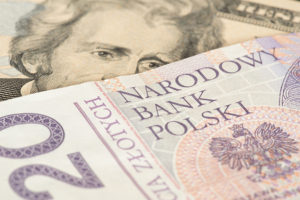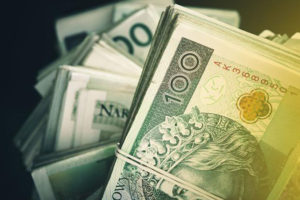What are the currency pairs and what is worth playing?
Forex is a market that offers us the possibility of concluding transactions on many different types of instruments such as stock indices, energy carriers, agricultural commodities, precious metals, as well as less typical ones such as bonds or even issuance CO2. However, the main subject of trade is, after all, currencies. Usually, beginner traders do not even realize that there is a division into three different "subgroups" of currency pairs that are available on our trading platform and what it means to us. It is worth exploring this knowledge before we start choosing the instruments on which we want to start trading, especially if less popular values are involved.
Currency subgroups
There is a very simple, 3-point breakdown of currency pairs:
- Main (Majors),
- Secondary (Minors),
- Exotic (Exotics).
Main currency pairs are the ones that, colloquially speaking, are the most popular on a global scale. In other words, they have the highest liquidity and, consequently, also the tightest spreads. Estimates say that as much as 85% of the Forex market turnover focuses only on these instruments, of which the vast majority of transactions concern a pair EUR / USD.
The main currency pairs include:
| EUR / USD | GBP / USD | USD / JPY | AUD / USD |
| NZD / USD | USD / CAD | USD / CHF |
Secondary currency pairs they are noticeably less liquid than the main pairs. This is reflected in the wider spreads however, they are usually compensated by a relatively larger amplitude of exchange rate fluctuations.
The secondary currency pairs include, among others:
| EUR / JPY | GBP / CHF | AUD / NZD | USD / SEK |
Exotic currency pairs are those that are known for their low liquidity, which translates into relatively large spreads, even in relation to volatility. Another disadvantage is the fact that there are often price gaps in their quotes, which can be observed at low intervals or tick charts. It also happens that brokers limit the leverage on exotics (e.g. the general leverage is 1: 500, on exotics 1: 200), as well as in the case of the Market Maker some only offer trading through *question about price a dealer above or below a specific volume.
READ ALSO: Currency pairs without the US dollar [cross pairs]
Exotic pairs include, for example:
| USD / PLN | EUR / TRY | NOK / SEK | USD / MXN |
* price inquiry - consists in sending an inquiry from the platform level about the transaction price for a given item. In the feedback message, we receive Bid and Ask prices, which are sent and verified by the broker's dealer. Only after approval, the order is sent for execution. The position is closed in the same way.
On which pair is best to trade
It depends. There is no unambiguous answer to this question. We should choose the instruments for ourselves, that is, depending on the strategy used and, above all, our skills.
Exotic pairs are characterized by an increased risk of less liquidity, higher transaction costs and poorer quality quotes. Thus, it is easier to include a price slippage on them or we have to set a wider one Stop Loss than usual. On the other hand, it is easier to find instruments with favorable swap rates there, which can be crucial in long-term strategies.
Major currency pairs are calmer, you could even say safer due to low costs and smooth quotes. Some also argue that they are more predictable - but does it not always depend primarily on our subjective predictions? The fact is that there are not many of them to choose from, hence the secondary pairs are an interesting form of complement and compromise. A trade-off between cost and volatility that can be used when major pairs are in a sideways trend with a very low fluctuation range. Each pair has its own characteristics that should always be investigated before trading, either by observation alone or by playing an experimental game on a demo account.
There is one simple piece of advice when choosing financial instruments, regardless of the market in which you invest do not trade what you do not understand.






















![Forex Club – Tax 9 – Settle tax on a foreign broker [Download the Application] Forex Club - Tax 9](https://forexclub.pl/wp-content/uploads/2024/02/Forex-Club-Podatek-9-184x120.jpg?v=1709046278)
![Trading View platform – solutions tailored to the needs of traders [Review] trading view review](https://forexclub.pl/wp-content/uploads/2024/03/trading-view-recenzja-184x120.jpg?v=1709558918)
![How to connect your FP Markets account to the Trading View platform [Guide] fp markets trading view](https://forexclub.pl/wp-content/uploads/2024/02/fp-markets-trading-view-184x120.jpg?v=1708677291)
![How to invest in ChatGPT and AI? Stocks and ETFs [Guide] how to invest in chatgpt and artificial intelligence](https://forexclub.pl/wp-content/uploads/2023/02/jak-inwestowac-w-chatgpt-i-sztuczna-inteligencje-184x120.jpg?v=1676364263)



![Izabela Górecka – “Success on the market depends not only on knowledge, but also on emotional stability” [Interview] Izabela Górecka - interview](https://forexclub.pl/wp-content/uploads/2024/04/Izabela-Gorecka-wywiad-184x120.jpg?v=1713870578)
![WeWork – the anatomy of the collapse of a company valued at $47 billion [WeWork, part II] wework bankruptcy story](https://forexclub.pl/wp-content/uploads/2024/04/wework-bankructwo-historia-184x120.jpg?v=1711729561)
![Adam Neumann – the man who screwed up Softbank [WeWork, part AND] adam neumann wework](https://forexclub.pl/wp-content/uploads/2024/04/adam-neumann-wework-184x120.jpg?v=1711728724)





![The most common mistakes of a beginner trader - Mr Yogi [VIDEO] Scalping - The most common mistakes of a beginner trader - VIDEO](https://forexclub.pl/wp-content/uploads/2024/03/Scalping-Najczestsze-bledy-poczatkujacego-tradera-VIDEO-184x120.jpg?v=1711601376)
![Learning patience: No position is also a position - Mr Yogi [VIDEO] Scalping - Learning patience - No position is also a position - VIDEO](https://forexclub.pl/wp-content/uploads/2024/03/Scalping-Nauka-cierpliwosci-Brak-pozycji-to-tez-pozycja-VIDEO-184x120.jpg?v=1710999249)
![When to exit a position and how to minimize losses - Mr Yogi [VIDEO] Scalping - When to exit a position and how to minimize losses - VIDEO](https://forexclub.pl/wp-content/uploads/2024/03/Scalping-Kiedy-wyjsc-z-pozycji-i-jak-minimalizowac-straty-VIDEO-184x120.jpg?v=1710336731)


















